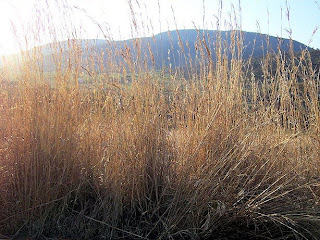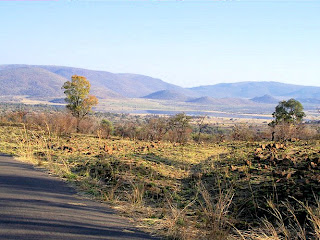The only function of drones is to mate with the queen.
 Workers
WorkersThe workers are sexually undeveloped females.
Life expectancy is approximately 28 to 35 days.

 In the centre is a huge dam. Because of the water, the birds and animals are plentiful.
In the centre is a huge dam. Because of the water, the birds and animals are plentiful. The Grey Lourie peeps curiously at me through the branches. A noisy bird which gives warning to the animals if danger approaches and sounds like it is saying "go-away". Living in trees, in pairs or small groups. They usually mingle in groups of 3-20, occasionally up to 60 beside water hole, jumping, climbing agilely about in trees while raising and lowering crest.
The Grey Lourie peeps curiously at me through the branches. A noisy bird which gives warning to the animals if danger approaches and sounds like it is saying "go-away". Living in trees, in pairs or small groups. They usually mingle in groups of 3-20, occasionally up to 60 beside water hole, jumping, climbing agilely about in trees while raising and lowering crest. Stopping at a watering hole to drink my coffee, I watched the baby hippo which was part of this group.
Stopping at a watering hole to drink my coffee, I watched the baby hippo which was part of this group.
 A queen can lay 3,000 eggs in a day.
A queen can lay 3,000 eggs in a day.